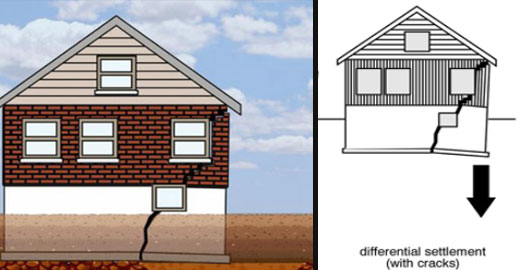
Many times, we see differential settlement at a rear room of a house. This will manifest itself with a floor sloping downwards towards the rear and cracks, either at the interior, the exterior or where the walls of the rear room meet the walls of the rest of the house. Sometimes these are at rear additions and sometimes they are part of the original construction. In many cases, we then further observe that the rear room is on a crawlspace foundation while the main house is on a full basement.
The foundations for the full basement are typically 8’-10’ below grade. The soil at this level is virgin soil which had not been disturbed and had been overburdened of 10’ of soil on it for a long period of time. Generally, the loads the house puts on this soil are comparable to the loads of the soil was removed to dig the hole for the basement was putting on the soil. Here, we typically do not see any additional settlement and/or movement. The same cannot be said for soil 3’-4’ down for a crawlspace foundation. Many times, this soil is disturbed. Many times, it is fill and the overburden on it is significantly less and, over time, makes is less likely to settle. If minor differential settlement occurs, monitoring it may be the best course of action. But if the differential settlement becomes significant, it is more likely that the crawlspace may need to be underpinned to prevent further damage and settlement to the structure.
Other Related Articles
Don’t Turn Your Crawlspace into a Basement without an Engineer
Carbon Fiber Reinforced Polymer Strips In Residential Foundation Reinforcing
